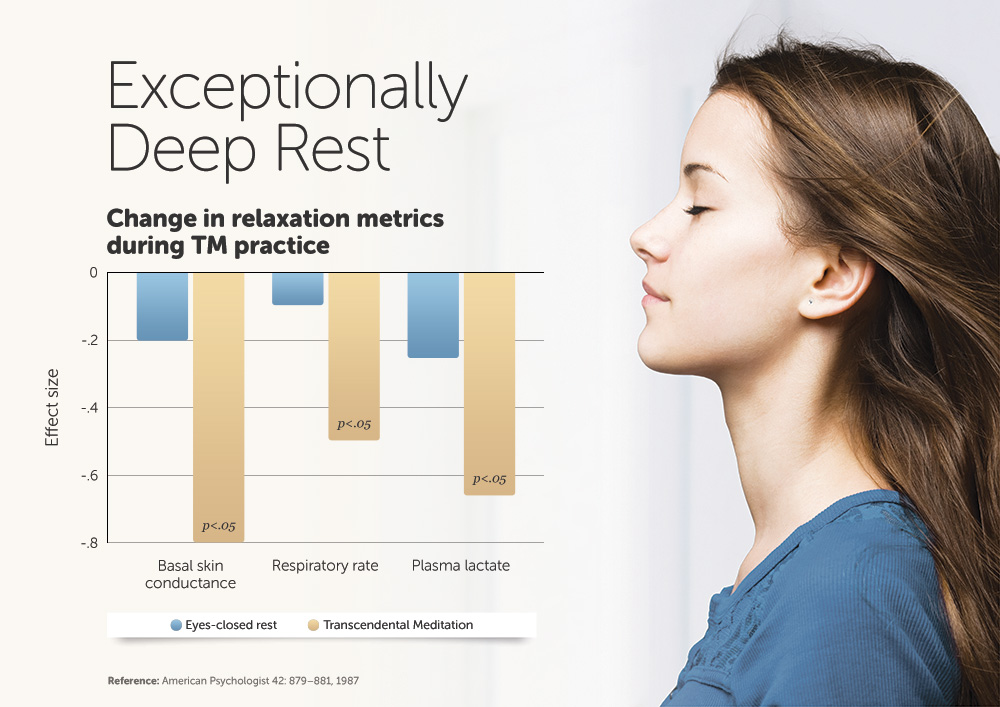
How I finally found an absurdly easy form of meditation that hooks you immediately, and that you’ll want to do every day.
I first found out about meditation when I was 19. I was a college sophomore who had broken free of the chains of Midwestern white Christianity and ventured into the realm of Eastern thought. That’s when I discovered Buddhism in particular, and meditation in general.
As I read about meditation, and why Buddhists promoted it as a central part of their religion, I loved the idea of it. And that’s about as far as it went: I loved the idea of meditating, but the practice — not so much.
I can remember the first time I tried to do Zazen meditation (the preferred mode of Soto Zen practitioners). I sat down, closed my eyes, focused on my breathing, and attempted to not think of anything. It didn’t work. Then I remembered that I shouldn’t try to not think; I should simply not think — but not think about not thinking. Immediately, I found myself sweating, in pain, and anxious with self-criticism. I was pretty sure that’s not what Dogen (the founder of Zen) had in mind for meditators.
The Various Flavors of Disappointment
So Zazen didn’t go well for me. But there are so many types of meditation under the Buddhist umbrella; one of them had to be non-anxiety-inducing, and bring me the benefits that I had heard so much about.
I moved on to Vipassana, Metta, Walking Meditation, Mindfulness Meditation, and even some (admittedly bumbling) work with koans (where you meditate while mulling over an esoteric and paradoxical statement or question from a classical Zen text). It was basically one disappointment after another.
I then tried some of the secularized meditation apps, with guided meditations and breathing exercises. Some did help me feel a bit better, but the effects were neither profound nor lasting. I also didn’t see them as doing much more than harnessing the power of breathing to trigger a physiological response.
For all of the forms of meditation I’ve tried over the past 15 years — both spiritual and clinical — none of them left me with either of the three things that are vital to support the establishment of a habit:
- some immediate positive reinforcement or small rewarding feeling
- a view of how this will benefit me long-term
- a lack of barriers to simply starting it each day
Enter the Dragon: Vedic Meditation
After having pretty much deferred a meditation habit to the bin of abandoned aspirations (along with running a marathon, and others), I managed to accidentally find the missing piece that I’d always been looking for to make meditation a regular habit. I was listening to a podcast, and heard Ray Dalio — bestselling author and noted hedge-fund manager — credit the practice of Transcendental Meditation for much of his ability to do what he’s done.
I had heard about TM before, but never given it a second thought. But this time, it stuck.The way he described it was so practical, down-to-earth, and easy, that it seemed like it was what I’d been looking for. Adherents of it tout all sorts of benefits, which have been documented by peer-reviewed scientific journals:
- notably less stress and anxiety throughout the day
- boosts in cognitive ability and creativity
- better sleep
- lower blood pressure
It sounded great to me. But here’s the rub: learning TM takes 4 days of 1.5 hour sessions and costs about $1000. Everyone insists that it’s worth it, but I’m always skeptical of things like that. So I did what everyone who grew up with Napster and CD burners would do: I tried to find a free version to try out.
What I found out is that TM is based on a very old form of meditation practiced by Yogis going back thousands of years: Vedic Meditation. It’s a dead-simple practice:
- you do it twice a day, for 20 minutes each session
- you sit down anywhere you can be somewhat comfortable and close your eyes
- you relax yourself by breathing deeply a few times
- you repeat a mantra (one short word that doesn’t have an English meaning) silently in your mind. Any time other thoughts come up, gently and non-judgmentally guide your mind back to the mantra.
- be totally okay and neutral with whatever your mind is doing during the twenty minutes
For as simple as it is, it is just as effective. From the first time I did it, I felt super relaxed after the session, and well into the rest of my day. I found that — unlike other forms of meditation I’d tried over the years — I looked forward to doing the meditation.
By the second and third times I did it, I experienced what practitioners call “transcendence” — which I can best describe as that really cool feeling you get between laying down to sleep and actually being asleep — but it lasts for about 20 minutes! It doesn’t happen every time — and that’s not the goal. But when it does, it’s really nice.
What Vedic Meditation Does
The only goal during a session of Vedic meditation is to allow your body to relax as deeply as possible. And when I say deep, I mean deep. How deep? As it turns out, during sessions of Vedic meditation, you can tap into a state of relaxation that is more regenerative than sleep, in terms of reduced cortisol (the stress hormone) and

From my own experience, I feel exactly what the data bears out (and, I might add, before I learned those data points). The afternoon session that I had on the day I began writing this article was after a particularly stress-inducing contract negotiation with a customer. Afterwards, I had a headache, I could feel my heart rate elevated, and I my mind was racing. I got back to my hotel room, sat on the couch, and did 20 minutes — just me, my mantra, and the timer to let me know when to stop. When I arose out of the session, it was as if I’d taken a nap for an hour or so — but without the grogginess I often feel after a nap.
The effects tend to last, as well. I’m not experienced enough yet (I only have a few weeks under my belt). But what I have noticed outside of the meditation sessions is the following:
- a more consistent mood: lower highs and higher lows, which means…
- …a more consistent energy level. Not bouncing off the walls, but not crashing, either.
- less trouble focusing
- I perceive more time between my felt emotional reactions and my physical actions. This means I can control angry outbursts or ill-thought-out reactions to stressful situations.
Skeptical? Great. Then Try It.
But please — please don’t take my word for it. That’s the beauty of this. You can try it for yourself. There is an app that I recommend to do this. I am in no way affiliated with it, but since it helped me start and sustain my habit, I think it’s only right to share it. It’s called 1 Giant Mind. That’s the only plug I’ll make.
Really, this article was almost as much to help me organize my thoughts about a new and beneficial practice that I’ve begun as it is to sell anyone else on it. So, if you have tried and failed at meditation previously, are interested in feeling better, and improving your physical health, and you can spare 40 minutes per day — try this.
Honestly, part of the foundation of this type of meditation is that it is — by definition — effortless. So you can’t even claim that you’re too lazy to try it (which is always my go-to excuse). If you did try it, and you’d like to let me know how it went, please feel free to email me. I’d love to hear your feedback.